The Promise of Vertical Farming
Our relationship to food, agriculture, land, and rural areas is about to change dramatically
15% of all habitable land—about the size of Russia1—is used for crops.
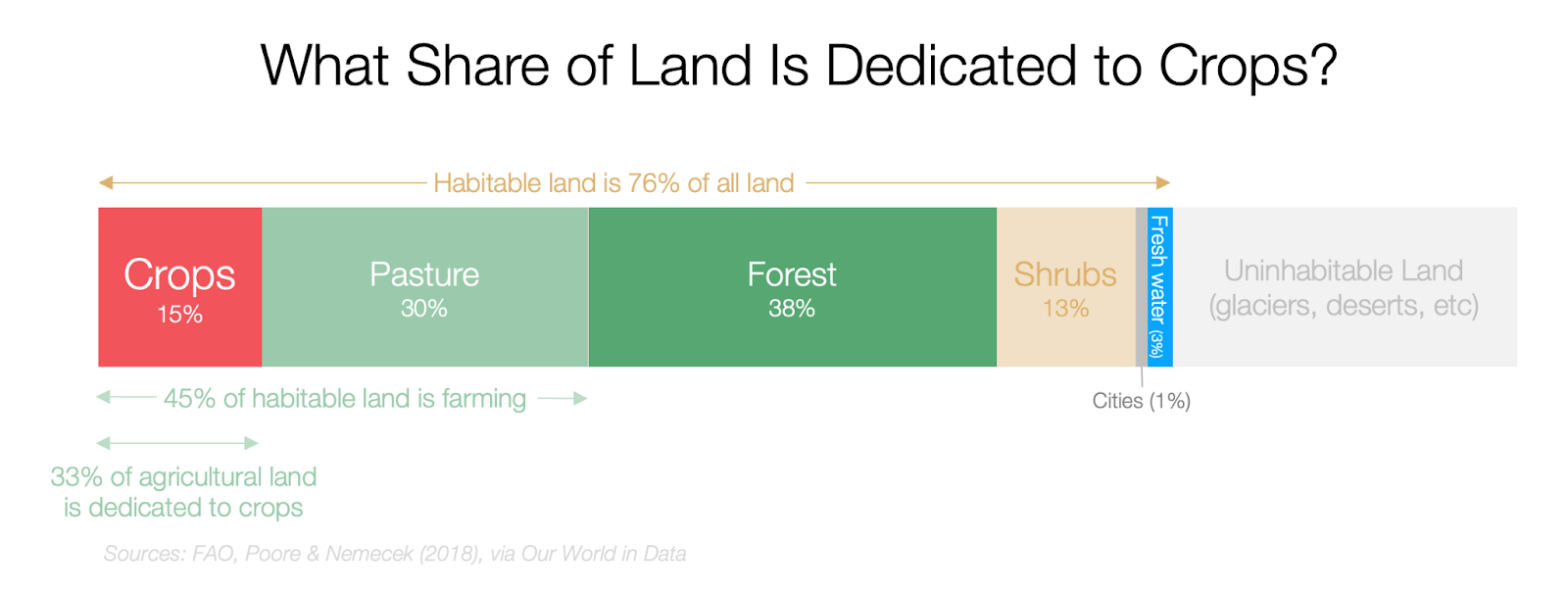
That has been growing consistently over the past few thousands of years.
A huge part of that land2 used to be like this:
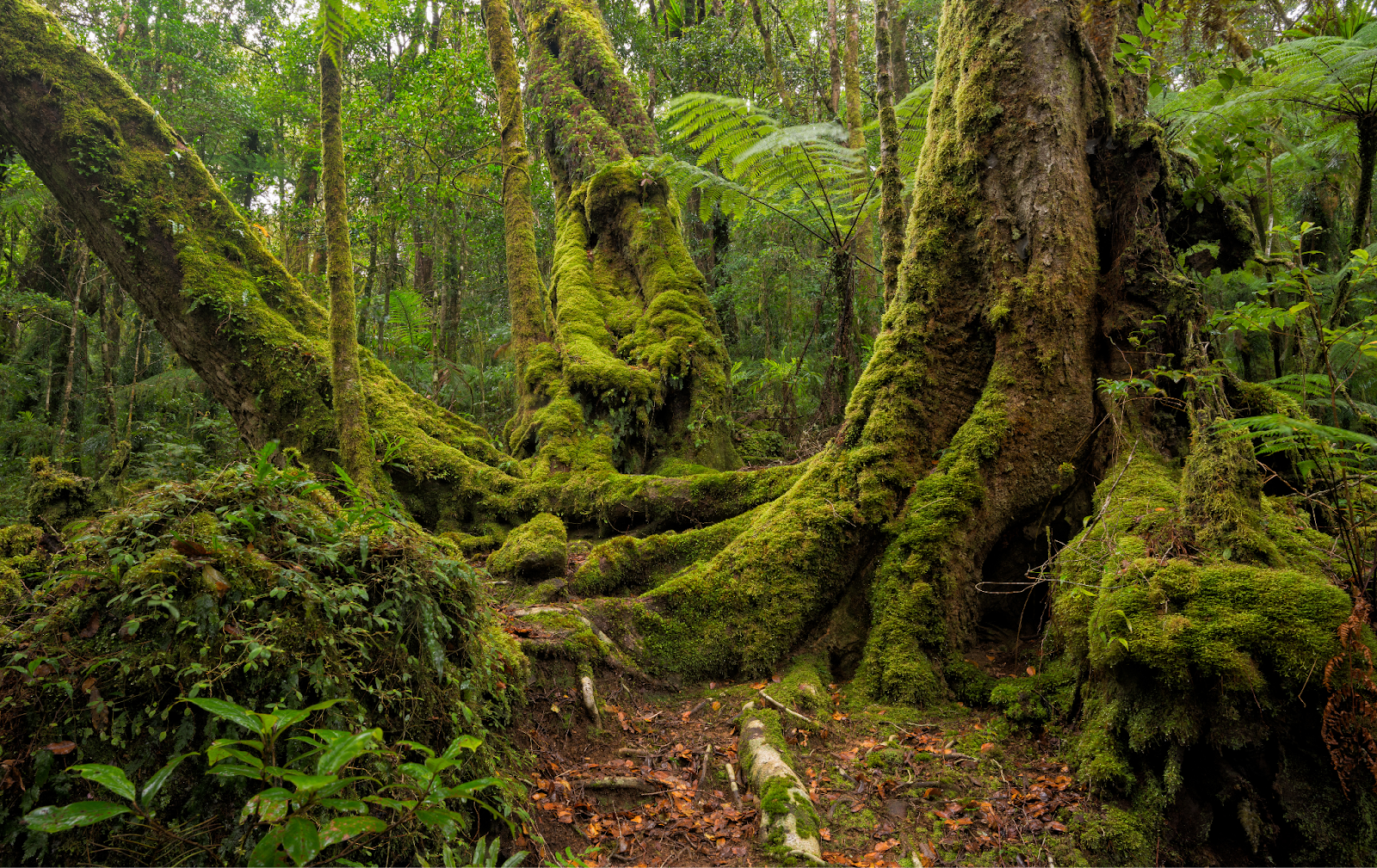
And now is this:
But we don’t have much land left that would be good for agriculture. As the human population continues growing this century, will we keep burning more forest to make room for our hunger?
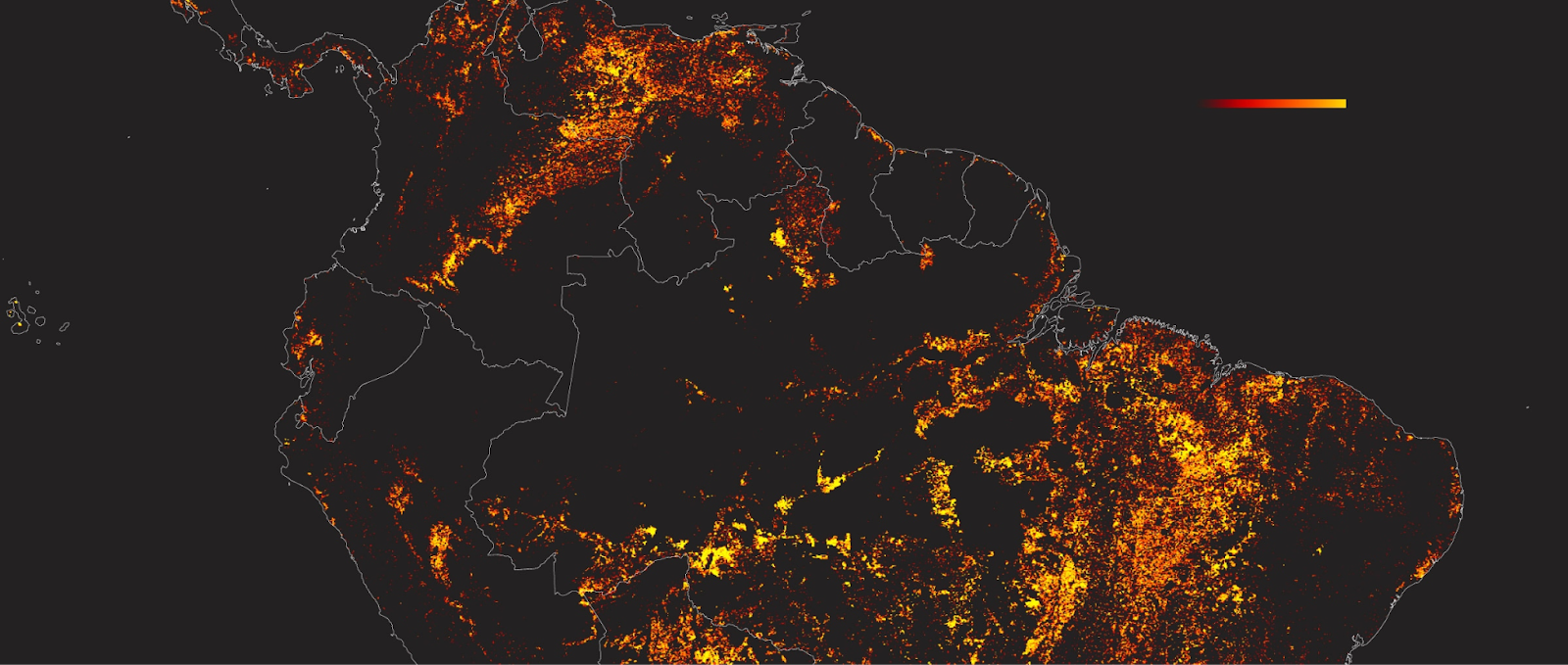
What about fresh water? We’re already short, and tensions are growing to compete for the little water we have. This is a problem, since 2.3 billion people live in water-stressed countries, and 70% of global freshwater is used for agriculture.
What if we could eliminate all these sources of scarcity?
What if we could rewild most of this cropland into forests and other natural habitats where native plants and animals can thrive?
What if we used some of that land for anything else we might want, like wildlife reserves, national parks, more cities, more solar farms, and more beautiful human habitats?
This increase of supply of available land would also reduce real estate costs. How would that additional affordability help families?
If we used 20 times less water to grow our crops, how would that affect water scarcity?
What if, at the same time, we could produce more food, of higher quality, greater diversity, and more cheaply, so that everybody could get sufficient food at predictable prices?
What if we could do it with less pesticide and herbicide? Could we eliminate all the endocrine disruptors we consume today?
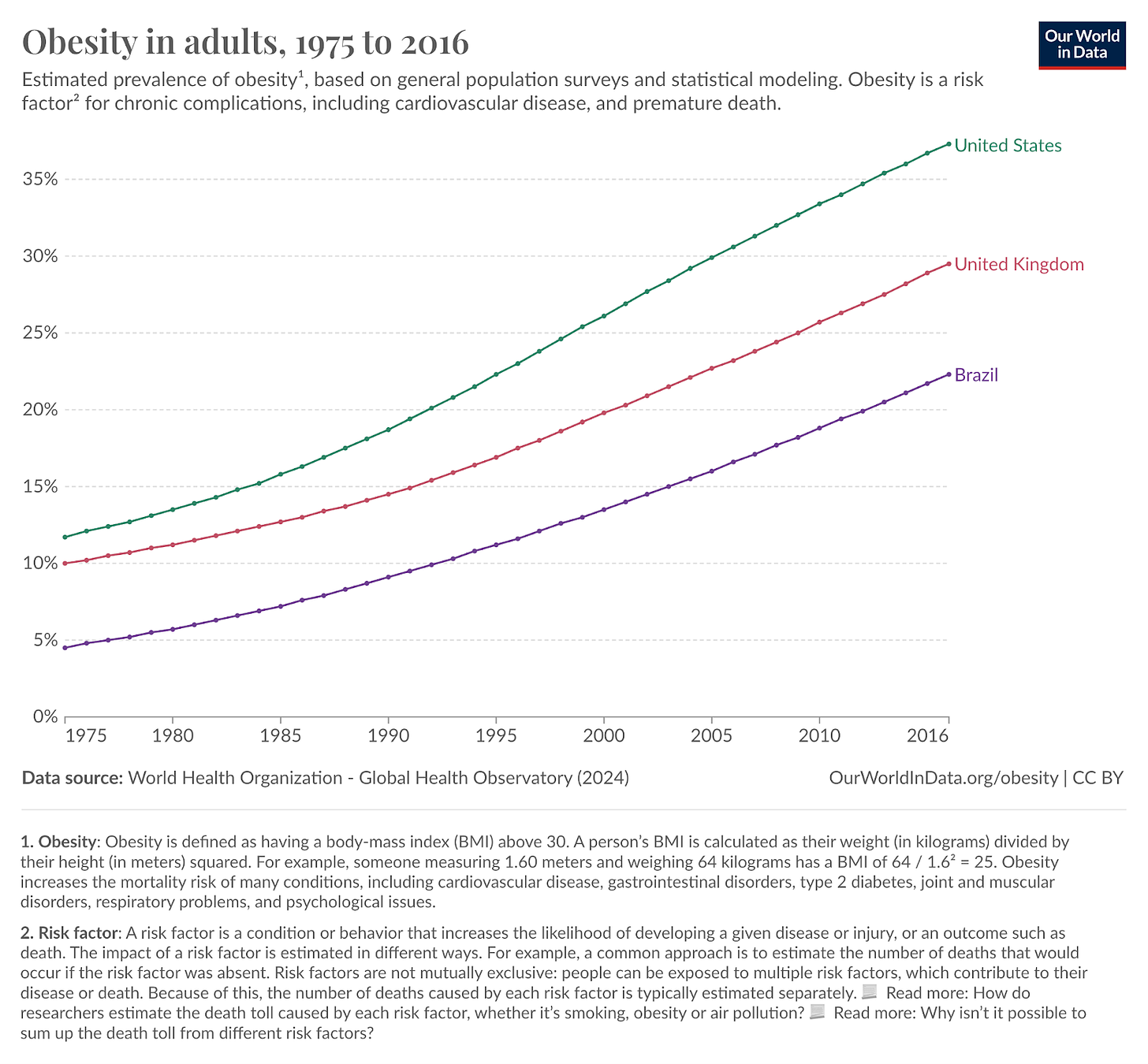
What if we could achieve all that while at the same time reducing waste and pollution?

What if this ended food shortages, and geopolitics were no longer decided by which country controls which crop?
We can achieve this through vertical farming.
The Promise of Vertical Farming
In the last couple of centuries, cropland has grown, but the world population has grown much faster, which means we have been consistently improving our farm productivity. Today, a human needs half the land he needed 60 years ago to survive.
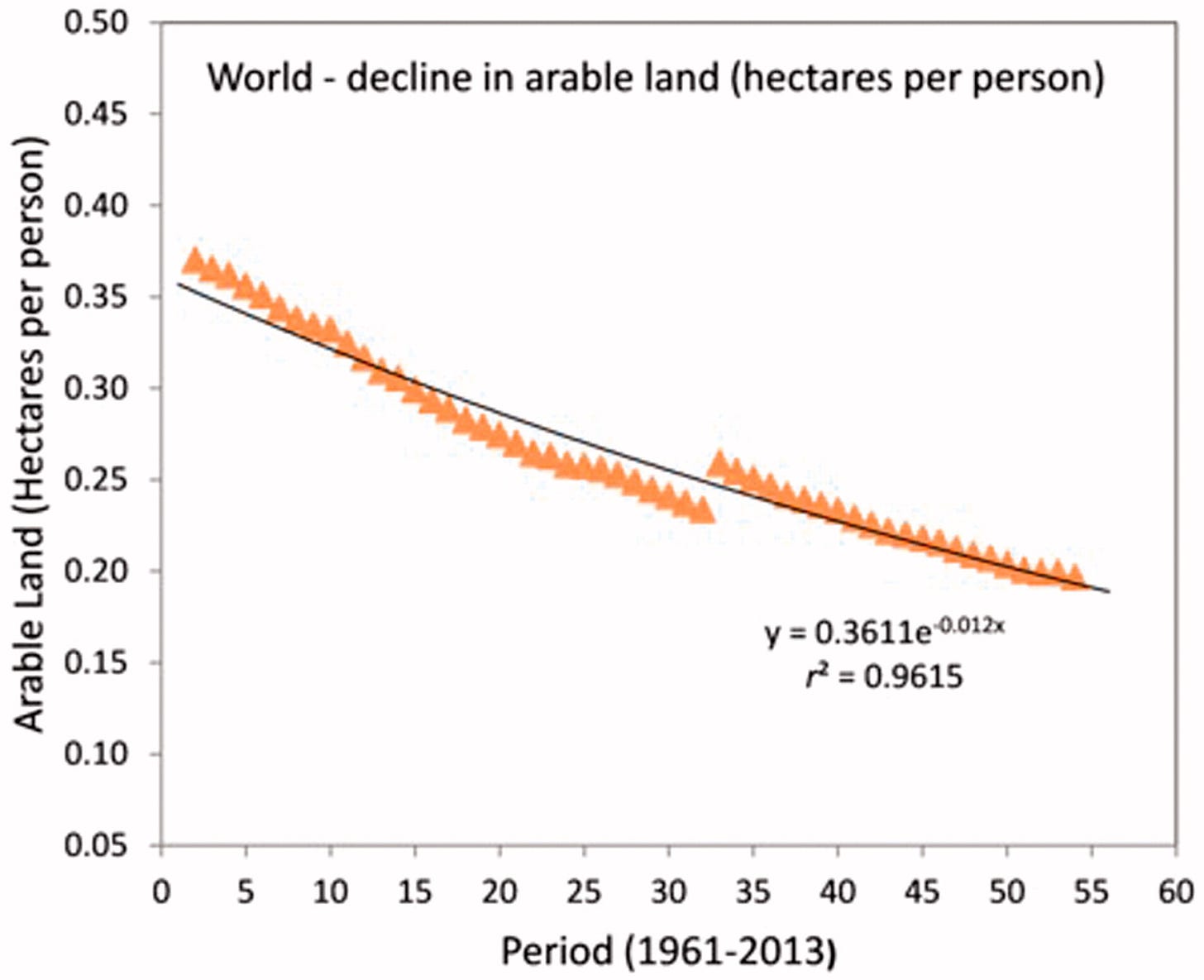
What if we shrunk that to nearly zero? That’s the promise of vertical farms.
They are indoor spaces with stacks of growing plants. The space has its light, temperature, humidity, nutrients, and water tightly controlled.
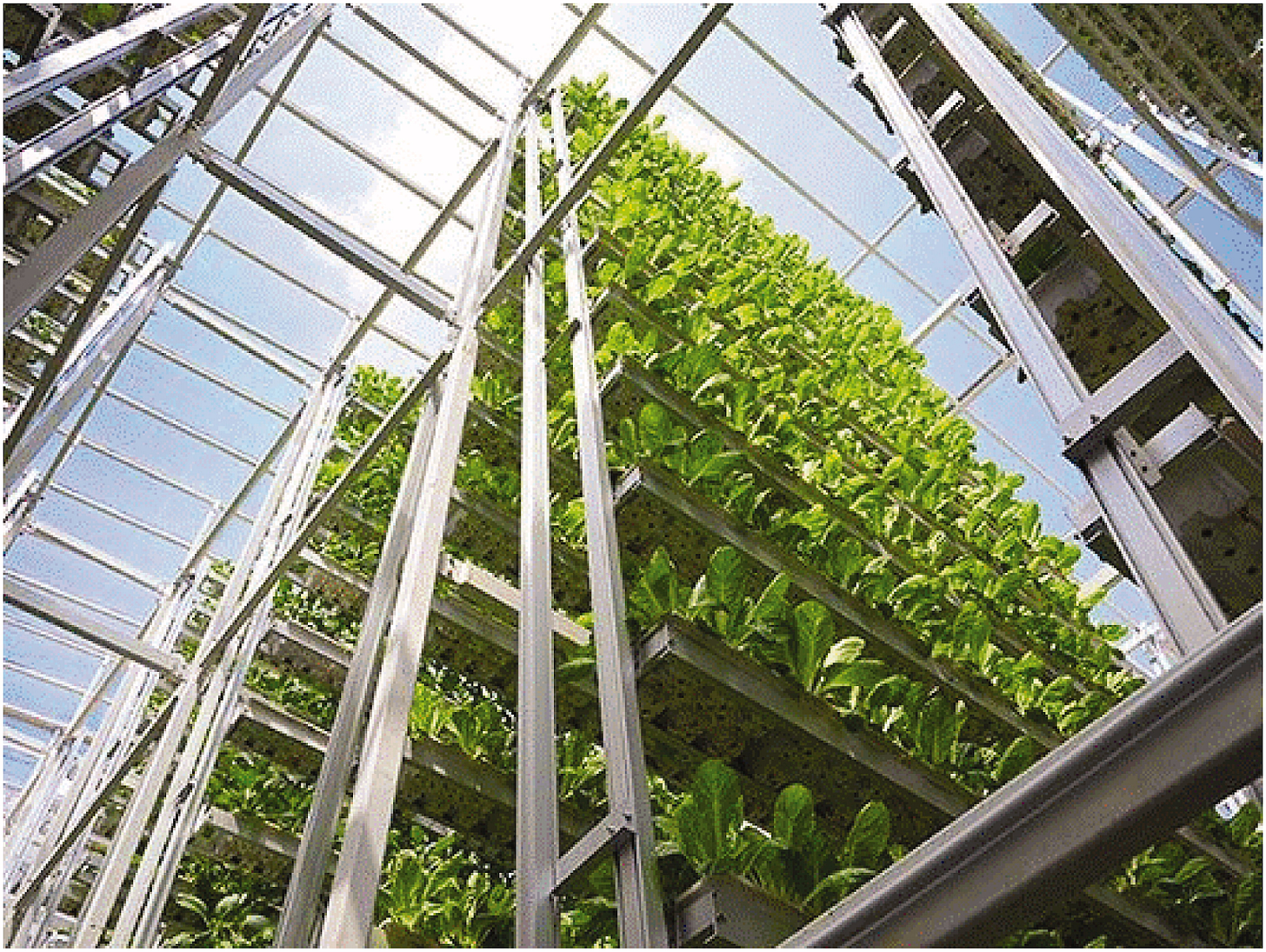
Unlock Land Limits
Today, the amount of food we produce is limited by the amount of land dedicated to it. Vertical farming has already released this shackle because we can stack floors of plants:
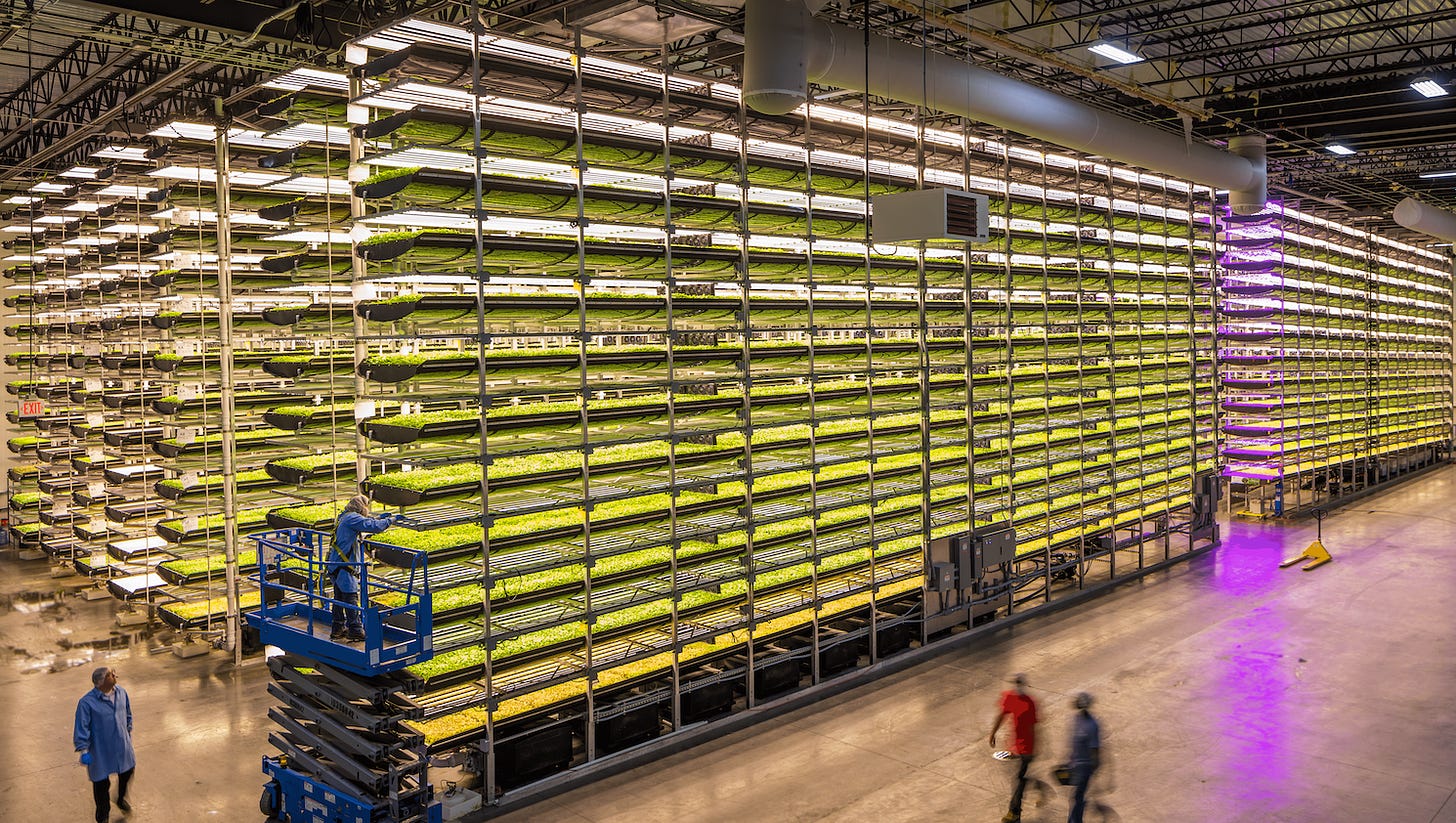
Imagine skyscrapers where plants reach the sky:
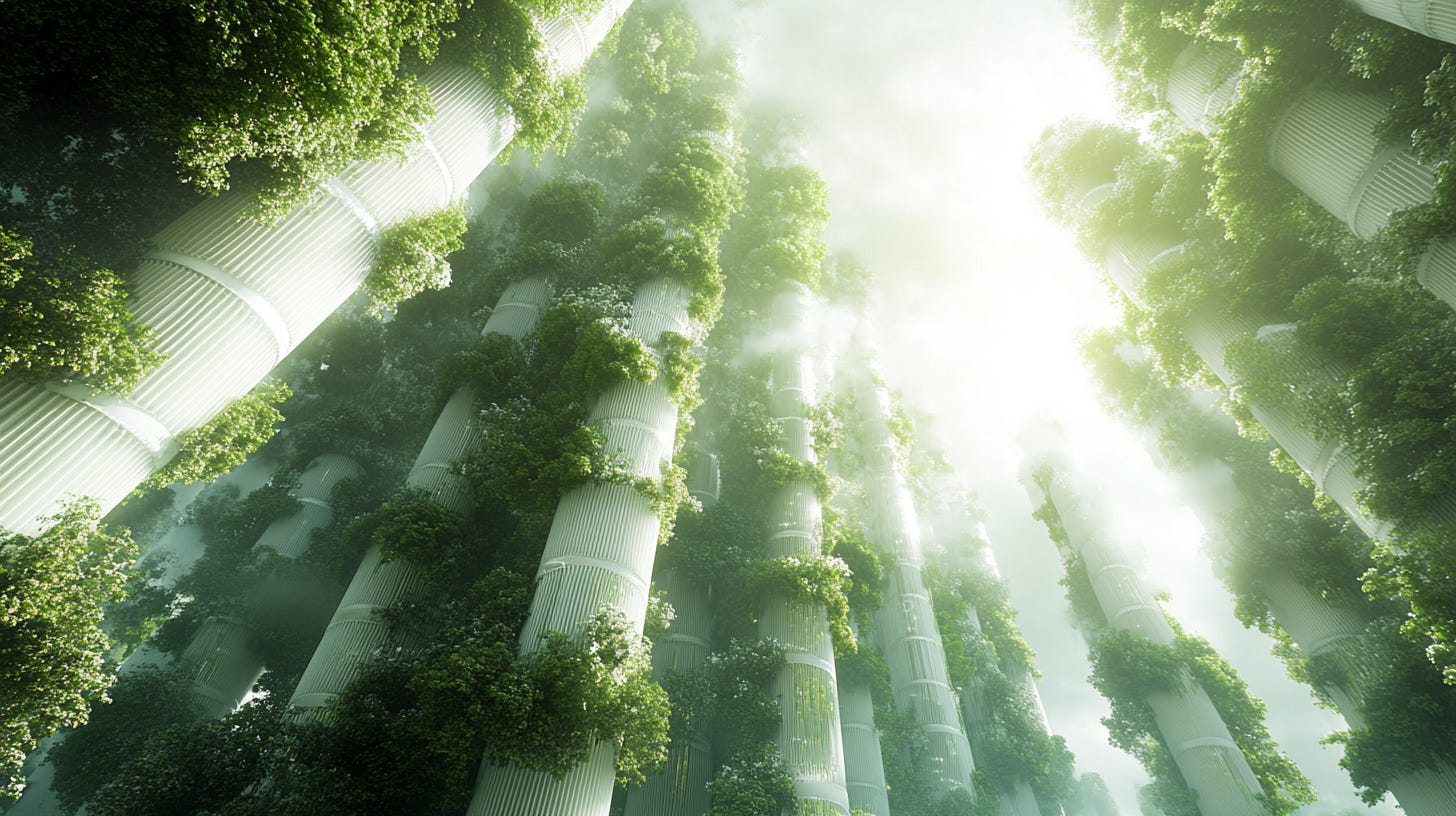
And it’s not just the number of floors. You can also pack more plants into the same space, because you can use artificial lighting to increase the energy they receive, while also bathing the plants in nutrients, without the need for soil.
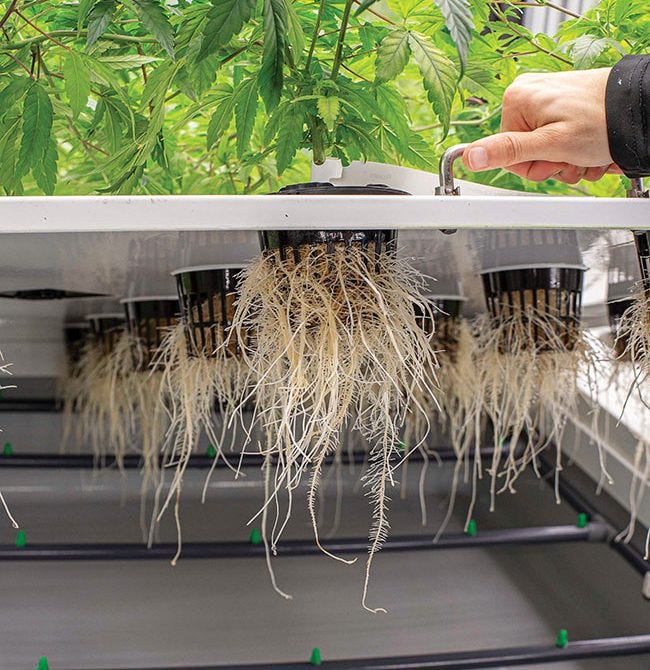
And then since you control the environment, you don’t need to wait for the right season, the right amount of sunlight, the right temperature or rain. You can have perfect harvests year-round.
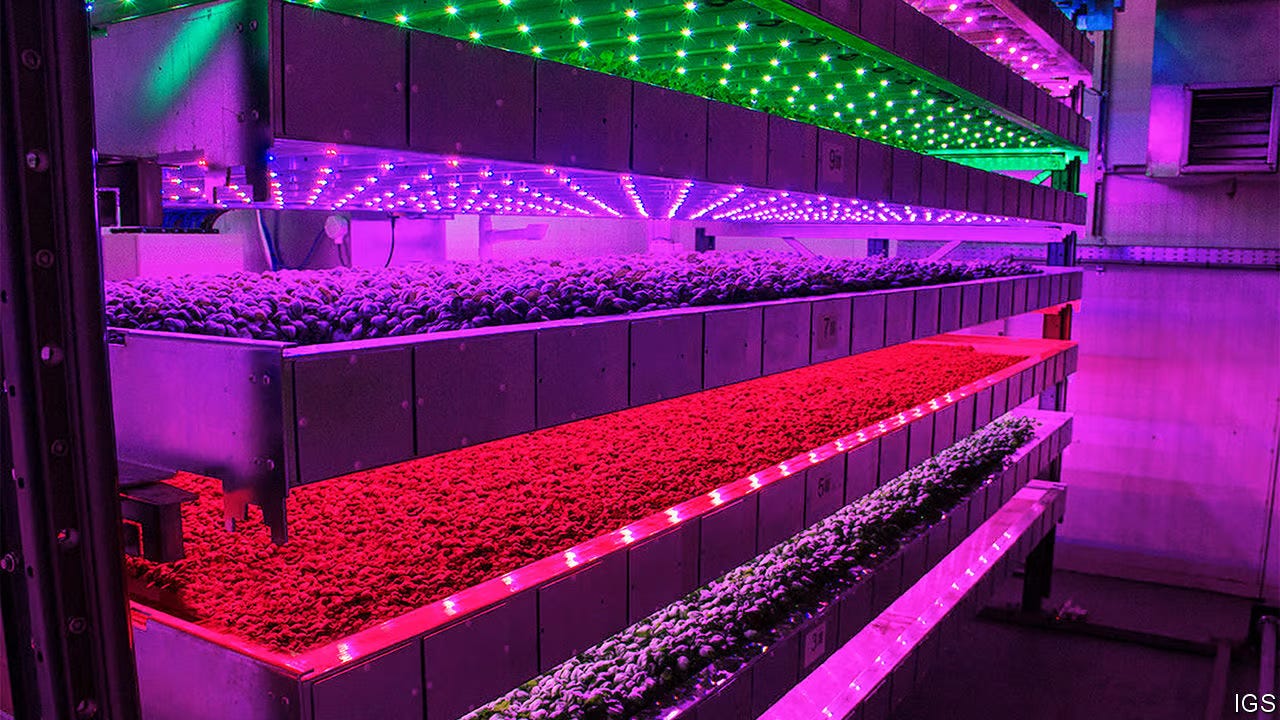
The more these processes improve, the better the productivity. Today, computers can control:
…illumination, carbon-dioxide levels, humidity, air temperature, root-zone temperature, and the acidity and dissolved-oxygen content of water delivered to the roots, as well as its nutrient content and any other aspect of its chemistry.
Plant growth is monitored by web cameras linked to software that detects leaf edges and color differences, and by sensors that can detect areas of active photosynthesis. After harvesting they are examined by lidar (the optical equivalent of radar) to record their shape in detail, and by gas chromatography/mass spectroscopy to understand their chemical composition.
Of particular interest are matters such as flavor and astringency, that are governed by chemicals called secondary metabolites. These are often parts of plant-defence mechanisms, so in one experiment the computers are looking at the effect of adding crushed arthropod exoskeletons to the water supply, which may mimic attack by insects or mites. The hope is that this will change flavors in controllable ways.
Where traditional farmers might have benefitted from one or two harvests a year, greenhouses have allowed them many more, and this benefit is even more true in a tightly-controlled vertical farm. For example, one Canadian vertical farm produces 20x more vegetables than outdoor farming per unit of land. A Japanese one produces 100x more with 40% less energy and 80% less food waste. A Singaporean one produces nearly 200x more.
Where floods or droughts or frost or heat waves might kill harvests, that won’t happen in vertical farms.
This means we will be able to grow all the food we need. No more famines, no more hunger, no undesired nutritional deficiencies, no more unaffordable food. It also means we release a planetary boundary that limits how many people can live on Earth. No more anxiety about a growing population.
Doing this in buildings instead of on the ground in open air has many other advantages.
Waste Less Water and Fertilizer
Most of the water used for irrigation ends up in the sea: It filters through the ground and into rivers instead of feeding plants.
In vertical farms, no water escapes. 95% of the water is reused—and the remaining 5% is what plants use to grow. There is no waste.
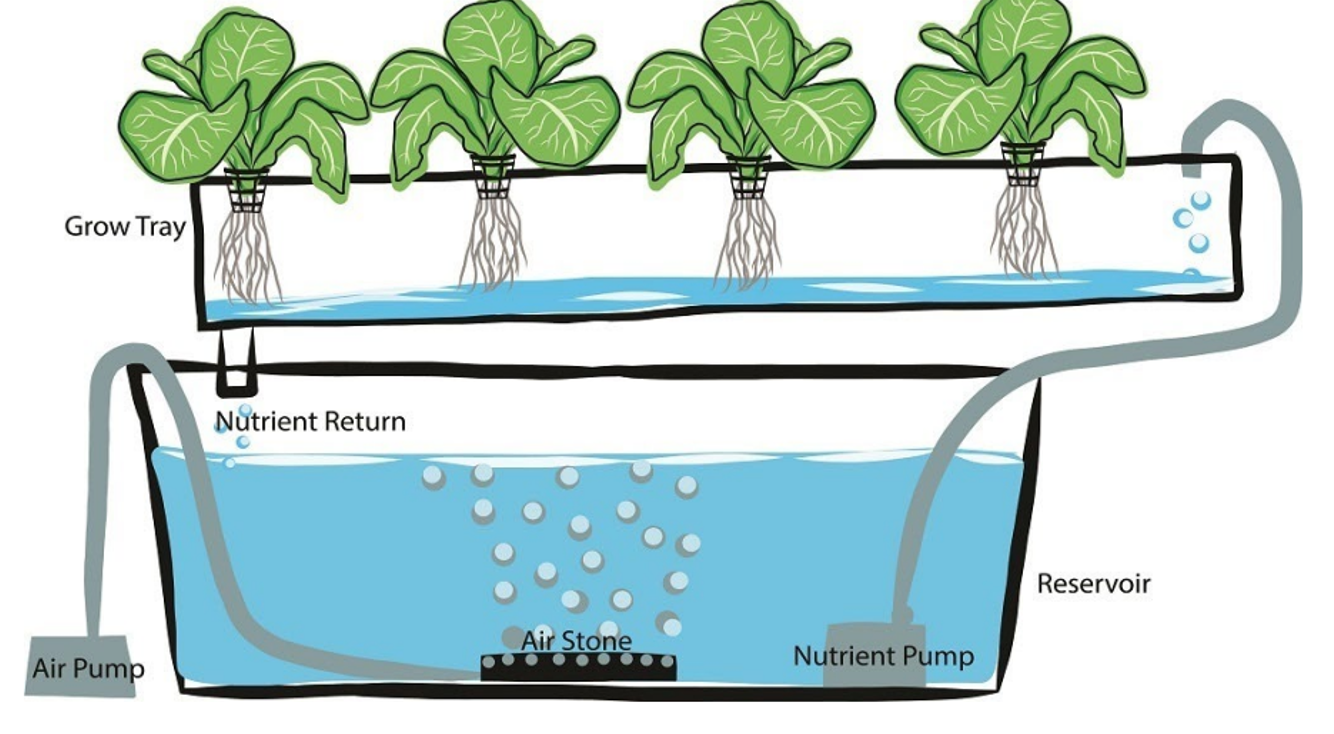
Less Pollution
This will reduce pollution too.
When you hear about fertilizer runoff, that’s because rainwater carries fertilizer with it and ends up in rivers and lakes.
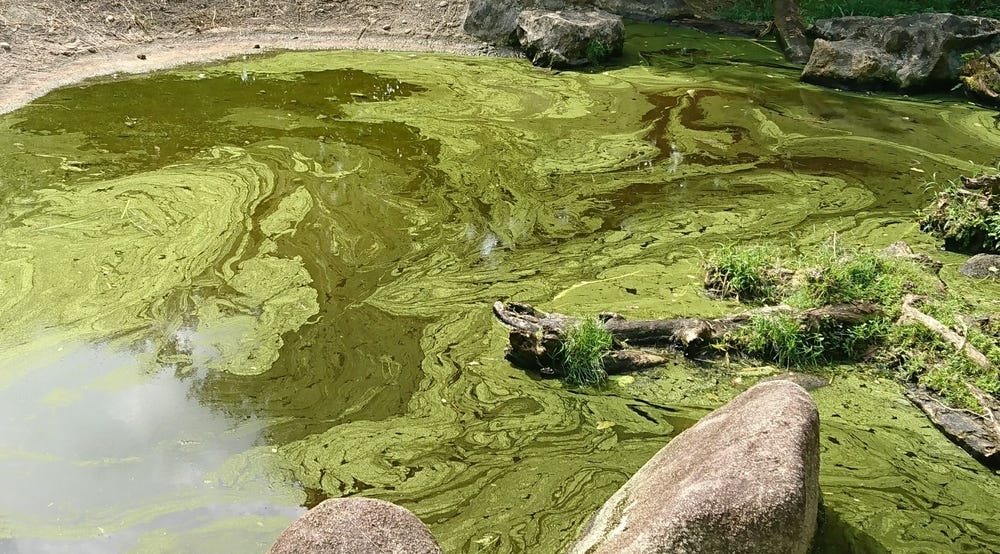
This is impossible in a vertical farm, where water and fertilizer are carried in a closed-loop circuit. What a plant doesn’t use is carried to the next one or recycled.
Crop production accounts for ~10% of all greenhouse gas emissions.3 About 1.5 percentage points come from fertilizer production.45 Another chunk from machinery use. Another chunk comes from transportation. 85% of global emissions of toxic nitrous oxide (N2O) are produced by microbes that digest some fertilizer intended for plants.
Replace open fields with closed environments close to cities, and you eliminate all the polluting waste and most of the transportation pollution.
Go paid at the $5 a month level, and we will send you both the PDF and e-Pub versions of “Government” - The Biggest Scam in History… Exposed! and a coupon code for 10% off anything in the Government-Scam.com/Store.
Go paid at the $50 a year level, and we will send you a free paperback edition of Etienne’s book “Government” - The Biggest Scam in History… Exposed! OR a 64GB Liberator flash drive if you live in the US. If you are international, we will give you a $10 credit towards shipping if you agree to pay the remainder.
Support us at the $250 Founding Member Level and get a signed high-resolution hardcover of “Government” + Liberator flash drive + Larken Rose’s The Most Dangerous Superstition + Art of Liberty Foundation Stickers delivered anywhere in the world. Our only option for signed copies besides catching Etienne @ an event.





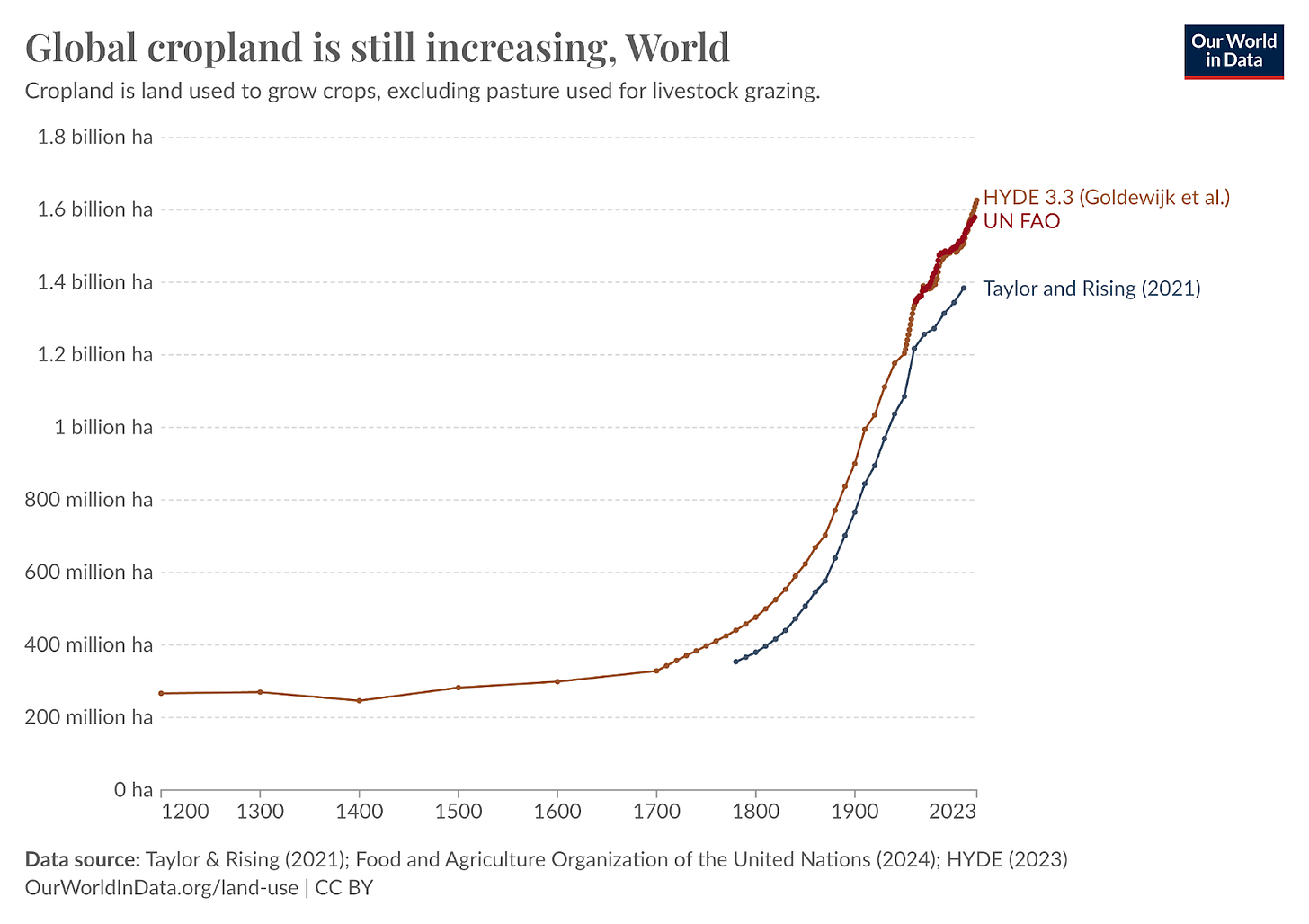
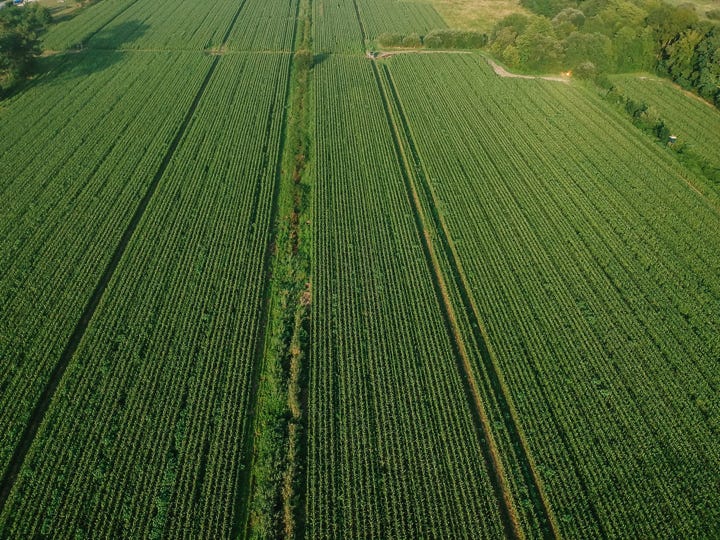


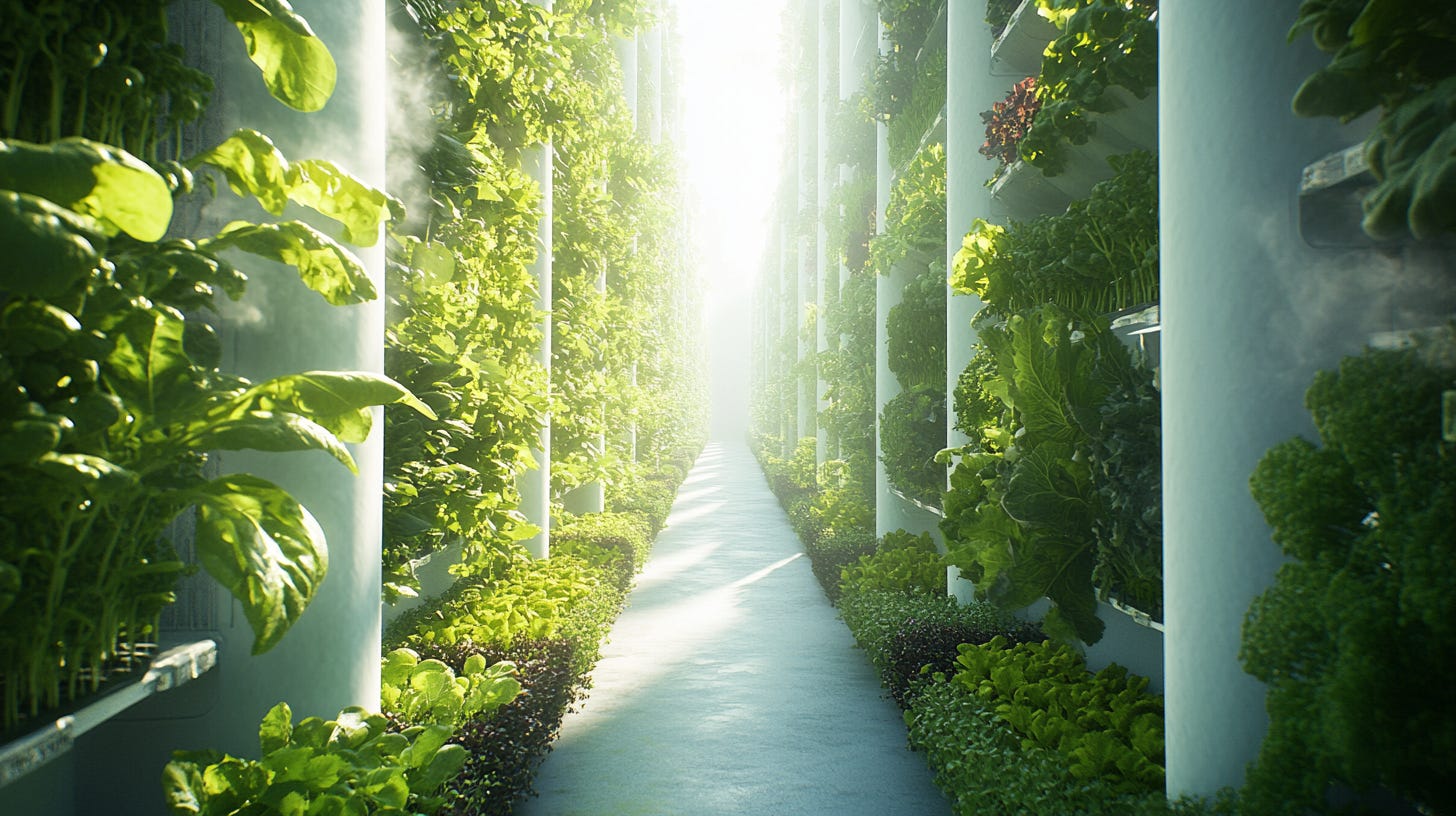

While It is intriguing, there are things about this attitude I find disturbing. They say that reducing labor in agriculture is a big step forward. 70% or the population a century ago to 1 or 2% now. So what are those people doing now? Working in factories or offices? And that's an improvement? Maybe they don't even work and just eat Doritos all day long. Not an improvement.
Vertical farming can be good for home gardeners tho, specially in winter in the northern climes. Democratize food production and grow your own!!!
Vertical farming with hydroponics completely ignores the value and importance of soil in relationship to the complex nature of nutrition and thriving ecosystems.
Look to Regenerative Agriculture to learn more about the long-term solution to food scarcity and land/water management, along with the work of Vandana Shiva to understand the importance of soil and seeds:
> Regenerative Agriculture: https://workflowy.com/s/beyond-covid-19/SoQPdY75WJteLUYx#/91c509e2b6ef
> Vandana Shiva: https://duckduckgo.com/?q=vandana+shiva+soil&t=brave&ia=web